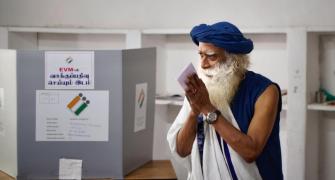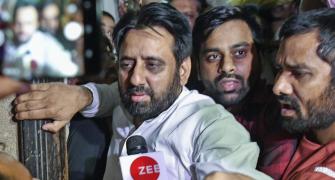The national Mainichi newspaper this month began serializing George Weller's stories and photographs from Nagasaki, about 980 km southwest of Tokyo, for the first time since they were rejected by US military censors and lost 60 years ago.
By hiring a Japanese rowboat, catching trains and later posing as a US Army colonel, Weller, an award-winning reporter for the now-defunct Chicago Daily News, slipped into Nagasaki in early September 1945, the newspaper said.
It was about a month after the two A-bomb strikes -- the first in Hiroshima and the second in Nagasaki -- that led to Tokyo's August 15, 1945, surrender, ending the war.
Weller, who died in 2002, was the first foreign journalist to set foot in the devastated city, which Gen. Douglas MacArthur, head of the US occupation in Japan, had designated off-limits to reporters, the newspaper said.
Carbon copies of his stories, running to about 25,000 words on 75 typed pages, along with more than two dozen photos were discovered by his son, Anthony, last summer at Weller's apartment in Rome, Italy, the Mainichi said.
Anthony Weller, a novelist living in Annisquam, Massachusetts, couldn't be reached for comment but the newspaper said he plans to publish his father's stories.
Though he skirted American authorities to get into Nagasaki, Weller submitted his reports -- the first was dated September 6 -- to the censors. The stories infuriated MacArthur so much that he personally ordered that they be quashed, and the originals were never returned.
About 70,000 people were killed in the explosion in Nagasaki.
Anthony Weller told the Mainichi he thought wartime officials wanted to hush up stories about radiation sickness and that they feared his father's reports would sway American public opinion against
The first batch of stories were finished just as a delegation of American scientists was to visit the city to test for radiation.
In a September 8, 1945, dispatch, Weller walked through the city -- which he described as a "wasteland of war" -- and found evidence to back the claims of radiation fallout being reported by American radio.
Though thousands of burn victims had died within a week after the attack, doctors were stumped by "this mysterious 'disease X'" which sickened and was killing many Japanese as well as allied soldiers freed from prison camps a month later.
"In swaybacked or flattened skeletons of the Mitsubishi arms plants is revealed what the atomic bomb can do to steel and stone, but what the riven atom can do against human flesh and bone lies hidden in two hospitals of downtown Nagasaki," he wrote.
One woman at a hospital "lies moaning with a blackish mouth stiff as though with lockjaw and unable to utter clear words," her legs and arms covered with red spots. Others suffered from a dangerously high fever, a drop in white and red blood cells, swelling in the throat, sores, vomiting, diarrhea, internal bleeding or loss of hair, he wrote.
The next day, he met a Japanese doctor and X-ray specialist who thought the bomb had showered the population with harmfully high levels of beta and gamma radiation. But nobody could say for sure.
"The atomic bomb's peculiar 'disease,' uncured because it is untreated and untreated because it is not diagnosed, is still snatching away lives here," Weller wrote.
Weller was 95 when he died in December 2002 at his home in San Felice Circeo, Italy, about two hours south of Rome. He won the Pulitzer Prize, the most prestigious journalism prize in the United States, for an eyewitness account of an emergency appendectomy carried out by a pharmacist's mate on a Navy submarine underwater in the South China Sea.
He also covered the French Indochina war in Southeast Asia and World War II in Europe, and filed stories from the Middle East, Africa, the Soviet Union and other parts of Asia.








